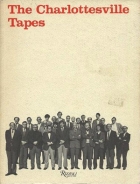DEMO OR NOT DEMO
From the ball and chain desk.
The recent demolition of Bertrand Goldberg’s Prentice Hospital, and the announced demolition of Williams & Tsien’s Folk Art Museum, raises the vision—or specter, depending on your point of view—of future demolitions of not-so-old buildings. What happened to the preservation of the past? I have always believed that the undoubted popularity of the historic preservation movement depends less on some abstract notion of heritage conservation and more on the actual architecture being preserved: in the past, that has meant the well-built, well-designed, and much cherished buildings of the late nineteenth and early twentieth century.




